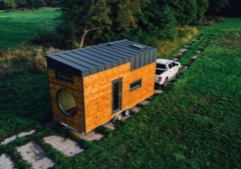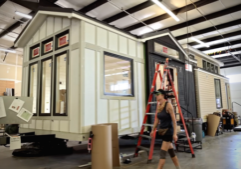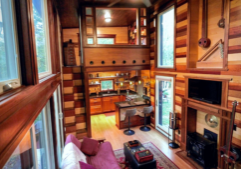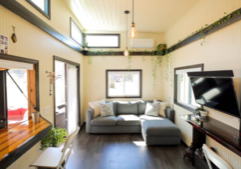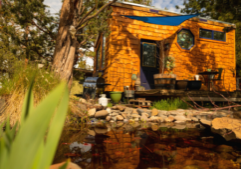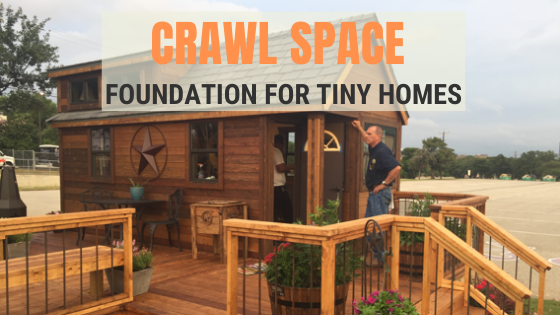
How to Build a Crawl Space Foundation in a Small House or a Tiny House on Foundation
Are you trying to learn how to build a crawl space foundation in a small house? If yes, you should check out this guide.
Mold and mildew, termites, and rotting foundations are the stuff of nightmares for homeowners, no matter the size house. Basements and crawlspaces house these evil villains, thus knowing how to build a crawl space foundation will help you sleep better.
Read on to learn more about crawl spaces and how to build one.
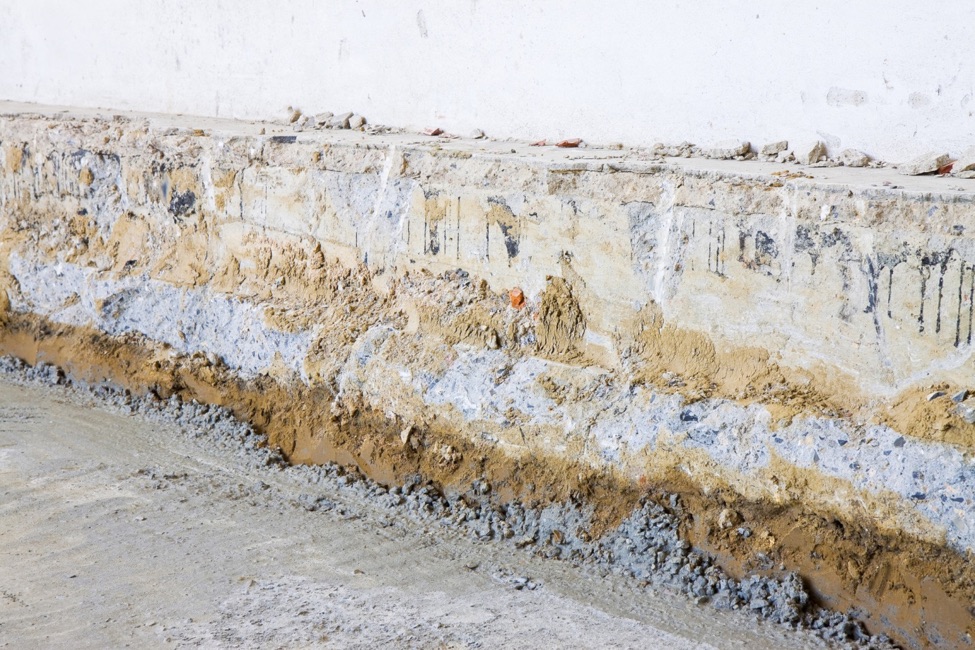
Why Have a Crawl Space?
Foundations do three things for a home:
They support the structure above them. They keep out groundwater. And they prevent water and soil vapor from coming into the house.
You do not just drop a home on a pile of dirt. You start with a foundation.
When you build or move home, you first build the foundation. It is the most critical part of the home. If it fails, your home will fail.
You have many choices of foundation. For the purpose of this article, we will focus on building just one but tell you about two others.
Slab Foundation
The slab foundation consists of a slab of high-quality concrete. It's the cheapest foundation to build and easiest to maintain.
However, if you have to repair a home, a slab foundation can cause you some problems. You will end up having to dig to find the plumbing or electrical issues.
Plus, a slab offers no protection from bad weather.
Basement
Basements are big holes in the ground under your home. They technically double your living space and give you oodles of options for more bedrooms, bathrooms, and storage. They also offer a subterranean shelter during wind storms.
But they have a host of potential problems, including groundwater issues as well as mold.
Crawl Space Foundation
Crawl spaces are the middle of the road foundation. They are essentially a shallow basement, as shallow as one foot. They give the home some elevation and air to breathe while not taking on the water you'd see in a basement.
When contractors build a crawl space, they elevate the home off the ground, pour footings, and then lay blocks to create the foundation. This foundation then supports the walls of the structure.
A crawlspace will cost less than a basement but will take just as much time to build. You can access your utilities, and you will also have warmer floors since they will be elevated, and you will not be walking on concrete.
A sound crawlspace will require insulation, and that will make your home warmer as well.
Crawlspaces are still prone to moisture. If you do not condition it, it can easily become a home to mold and fungi.
Because a crawlspace offers just enough room to crawl, it does not give you shelter in a storm. Thus people with crawl spaces in tornado-prone areas will often have exterior shelters.
How to Build a Crawl Space Foundation
When building a crawl space, a contractor will lift the home and then have a below-ground course of walls.
Because crawl spaces are prone to dampness, they work best in dry climates. Engineers have developed ways to keep the crawl spaces dry, though, since they are cheaper to build than a basement.
Contractors will keep water out by using perforated pipes and gravel in addition to a trench around the crawl space. This will keep the water away.
Using an encapsulated crawl space will seal off any unwanted moisture and keep the space healthy.
Checklist for Building a Crawl Space
Building a crawlspace takes skill. You need to make sure you follow building codes. You also need to create a safe space.
Here are some basic things to check as you build your crawlspace.
-
Did You Seal Your Vents?
Some people believe the crawlspace vents prevent moisture and rot. However, if you encapsulate your crawl space with Class 1 vapor retarder and then use conditioned air supply, you do not need to have those vents. You can cap them or seal them.
-
Is Your Access Door to Code?
Make sure your access door is to code. Typically, codes require the door to be 18x24 inches. Check your local building codes.
-
Did You Use Vapor Retardant on the Ground?
A crawl space is more than just a shallow hold under your house. You need to protect it from the elements. Any amount of mold or mildew can travel up to your home. It can rot the foundation of your home and make you sick.
So you need to encapsulate the space. When you do this, you must use a Class I vapor retarder. You should also have a vapor barrier that covers the ground.
Vapor retardant will prevent that mold from growing.
-
Did You Drain and Vent to Code?
Make sure your crawlspace surface slopes to a drain or a sump pump. If your surface does not slope, water will collect, and you again could have mold issues.
-
Did You Use Damping Proof Materials for the Outside Walls?
Your exterior walls are susceptible to moisture, as well. If the outside grade of your wall is higher than the inside grade, the exterior walls should contain a damp proofing material.
-
Is Your Air Moving?
When you encapsulate your crawl space, you need to keep the air moving in it. The more you keep the air moving, the less susceptible the area is to mold.
You can use operated mechanical exhaust ventilation or conditioned air supply. Permanent dehumidifiers work as well. All of these systems will keep the space dry and healthy.
-
Are You Insulated Properly?
If you want a warm home, you need to insulate the crawl space properly. Use thermal insulation on the walls inside the space if the floor is encapsulated with Class I vapor retarder.
You can also use foam insulation boards. These boards should have a thermal barrier.
Dig Shallow, Dig Smart
Now that you know the ins and outs of how to build a crawl space foundation, you can dig smart. Crawl spaces can become the breeding ground for mold and critters, or they can create a warm, energy-efficient home.
For more interesting tips on making your tiny house better, keep visiting our blog.
Sign-up for this acclaimed 16+ hour Digital Tiny House Workshop to learn how to build a tiny house, the legalities to be aware, how to make the transition to living tiny, and more!
INCLUDED with the DIGITAL WORKSHOP:
- 54 bite-sized, engaging episodes
- Downloadable follow-along booklet for note-taking
- Over $300 in FREE bonuses, from tiny house plans to more how to's
- Digital Diploma upon full completion of the course
- 30-Day Money-Back Guarantee


